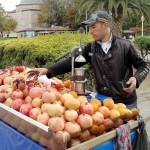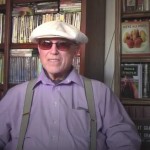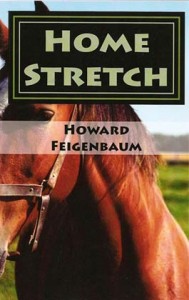by HF Mystery Writer | May 26, 2016 | Craft of Writing, Detective Fiction Author, Indie Author Blog

Coho Ferry
The Writer as Artist
Creativity and format shape the writer’s work. The story depends on the ideas the writer brings to the page. The rules of English composition, grammar and punctuation affect readability. How frustrating. If only I could transmit ideas to the reader without paying attention to the rules.
A comparison of writing to painting is worthwhile. I have had the good fortune to learn the visual arts, photography and painting. My fifth grade art teacher, after a year of seeing my drawing and painting, said that I shouldn’t continue with art. I believed her until later in life when photography, then painting, held my interest. Her words still lived in my mind until I discovered that talent wasn’t required for art. One had to learn the rules and apply the lessons. Practice, in my case, did not lead to perfection—but it brought me a heck of a lot closer.
I realized that the images I sought to portray depended on attracting and holding the viewer’s attention through the use of colors, values, contrast and composition. Easy to say, but hard to do. You must give yourself over to the medium. Why do artists do that? Above all, they want to communicate an idea. For the devoted among us, the journey may lead down the path to mastery.
Everyone has access to paper and pencil, but not everyone will be an artist. Some will be dilettantes, having a superficial interest that culminates in a hobby.
What makes the writer an artist? I believe it’s the individual’s dedication to the process of fusing creativity with structure and understanding what appeals to the audience—peppered with inspiration.
We sort ourselves out. Nobody says who can be or can’t be an artist or a writer. No license required. But, in the end, we know.
Save
by HF Mystery Writer | Apr 2, 2016 | Craft of Writing, Detective Fiction Author, Indie Author Blog
 The Art of Being There in Fiction.
The Art of Being There in Fiction.
I have found that the best way to bring a sense of place to readers is through research. The characters may be fictitious, but the reality of location makes the story more interesting and believable.
Many people enjoy reading novels that are set in places they visit. I am one of them. In my youth, I read about the ancient Minoan civilization on the island of Crete. The story stoked my desire to see the place for myself. When I visited the ancient ruins, it was like enjoying an impressionist painting. The structural foundation was there, and my knowledge completed the picture.
Much of the action in the first volume of my Benny Goldfarb, Private “I” series takes place in Colombia. I researched the locations, the history, the culture, and the food. The next year, after the book’s publication, my wife and I had the good fortune to visit Cartagena. We hired a driver to take us on a tour of the city, stopping at places described in the book. He heard me informing my wife, in detail, about the sites. “You have been here before?” he asked. I explained that I was an author. My mind had been here before. This was the first time for my body.
A story can be more than a story. It can morph into a three-dimensional experience that comes alive when you visit the setting—but only if the writer’s research is woven into the tale’s fabric.
Save
Save
by HF Mystery Writer | Feb 19, 2016 | Craft of Writing, Detective Fiction Author, Indie Author Blog
 The Path to Writing
The Path to Writing
Check out my new YouTube video, Interview with Howard Feigenbaum, produced by fellow author Jim Hitt. In this video I discuss my decision to become a writer and offer advice for those who wish to become writers.
by HF Mystery Writer | Nov 2, 2015 | Countries I Write About, Detective Fiction Author, Travel Detective Mystery
New Horse Racing-Themed Detective Mystery Novel is Out!
 An Argentine racing syndicate uses four horses as collateral for a loan. When the loan defaults, the bank discovers that the horses have forged identities.
An Argentine racing syndicate uses four horses as collateral for a loan. When the loan defaults, the bank discovers that the horses have forged identities.
Benny Goldfarb, Private “I” travels to Argentina, Brazil and Paraguay to unravel the fraud. The tri-border area is a haven for criminal gangs and terrorists. They stand between Benny and his client’s money.
Why do they call Benny to unravel the crime? How do his unique skills come into play? Where does Benny stand with his love interest, Rosa? And how do Rosa’s newly-discovered Sephardic Jewish roots weave into this tale of crime, drama, travel, adventure, passion and romance?
You’ll have to read Home Stretch, my latest horse racing-themed detective-mystery novel to find out.
Save
Save
by HF Mystery Writer | Jul 9, 2015 | Craft of Writing, Detective Fiction Author, Indie Author Blog
 A Cultural Bridge
A Cultural Bridge
Traveling to a country and being there is an important advantage for a writer. Research can’t replace the impressions and feelings one experiences by immersion in the culture. The sound, the look, the language, the humor, the food—all of these make an impact that color the story.
What difference does personal experience make? After all, a work of fiction is what you want it to be. The authenticity of details enhances what is believable. Even readers of fiction will reject descriptions that are inaccurate or don’t ring true. Their attention leaves the story and grapples with what is out of place. The logic of the human mind is always at work.
In some ways, writing is like painting. Most people appreciate realism, firmly planted in the truth of accurate portrayals. Many people will accept impressionism, relying on gestures and forms which rely upon the viewer’s mind for completion. Furthest away from popular taste is abstraction, a created world with few familiar signposts, requiring the viewer to search for meaning in unfamiliar territory.
Art has no definition. Popular acceptance does.
Save
by HF Mystery Writer | Jun 8, 2015 | Countries I Write About, Craft of Writing, Detective Fiction Author, Indie Author Blog
 I like to have my characters enjoy a good meal.
I like to have my characters enjoy a good meal.
Barbeque Peru Hacienda
Food is fascinating. If you’re writing about location, why not include food? The characters in the Benny Goldfarb, Private “I” series spend a lot of time in South America. The cuisine changes from country to country, depending on the agricultural traditions. For example, Argentina is big on beef and empanadas. Peru offers a smorgasbord of almost endless types of potatoes. The menus in Colombia are loaded with fish. In my experience, readers enjoy having the local food incorporated into the story.
From my point of view, food is part of a culture. I like to illuminate the setting that characters occupy by occasionally referencing the meals. The reader makes a silent judgment about the food. Sometimes curiosity about a particular dish is aroused and satisfied. The ingredients may add to a feeling of what life is like in that distant place. In any case, I like to have my characters enjoy a good meal. Why not? It’s my story. And they seem to like the experience.
Save






